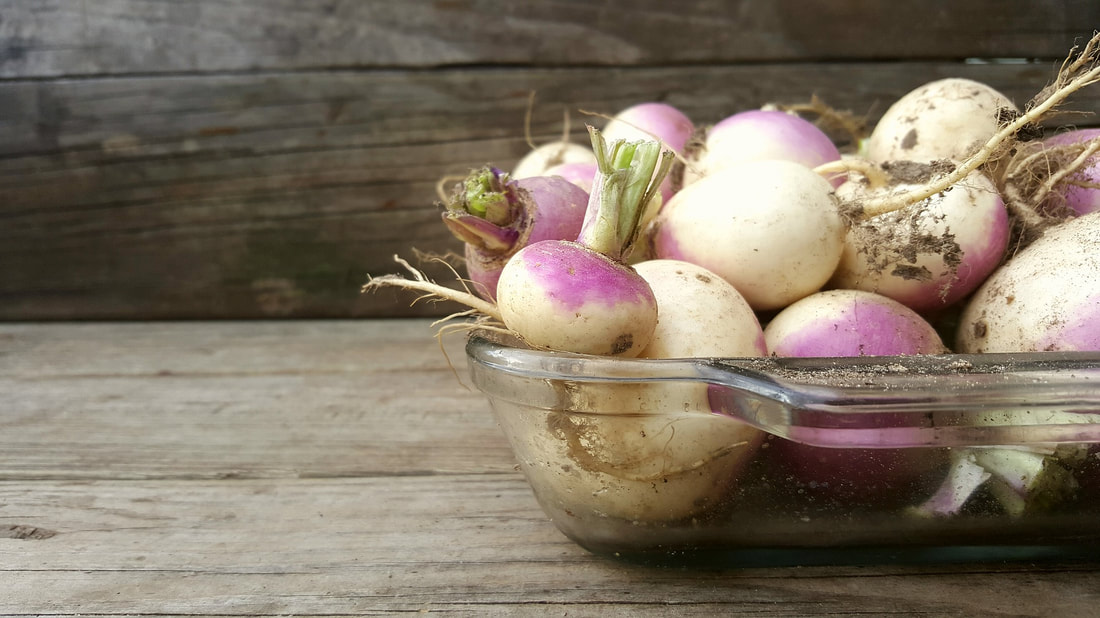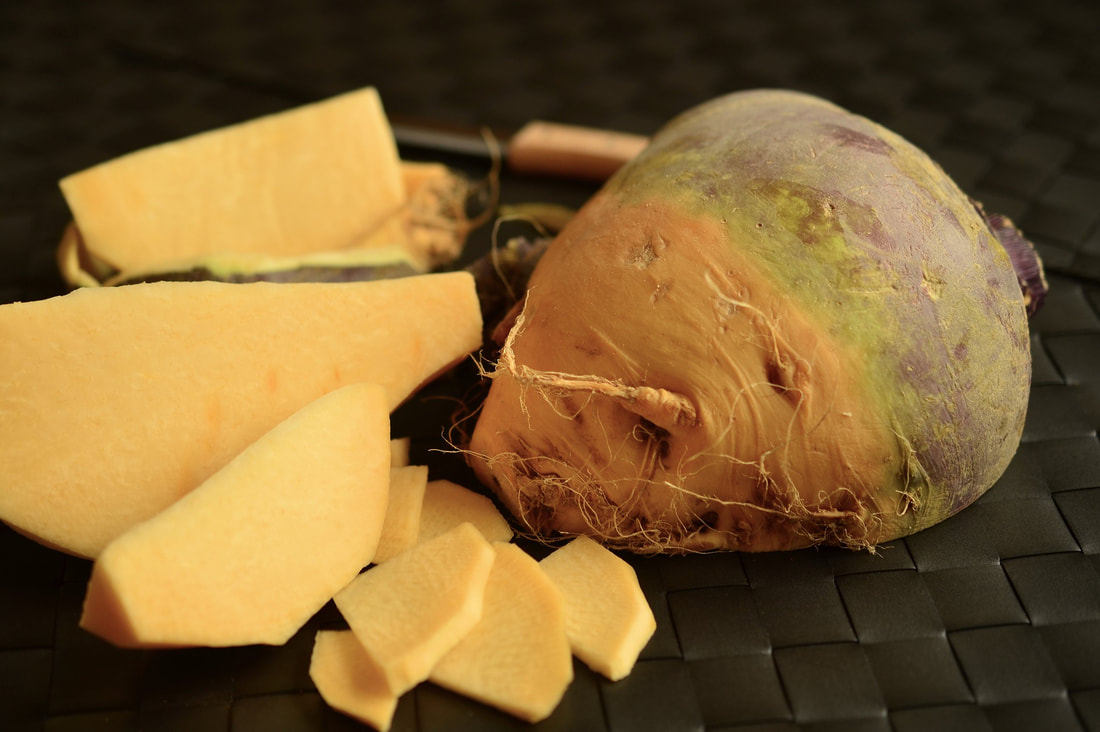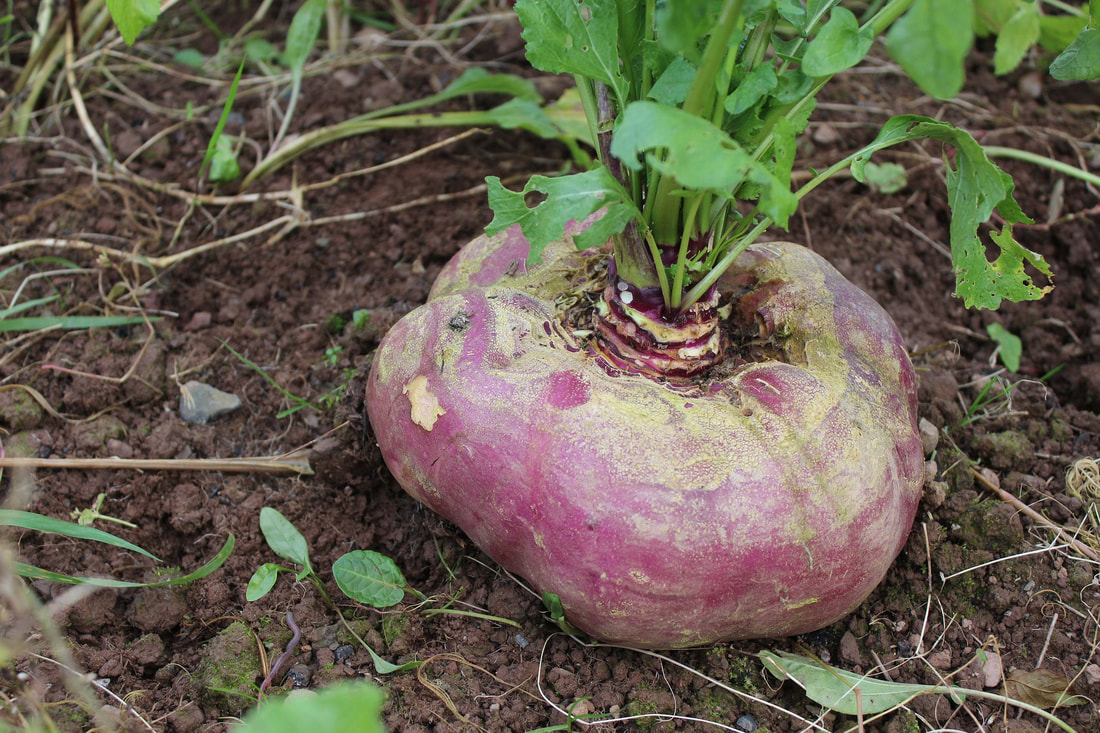Turnip Vs Rutabaga
Is it a Turnip or a Rutabaga?
Turnips (Brassica napobrassica) and rutabagas (Brassica rapa) can be found in the produce section of the grocery store, but these root veggies can be difficult to tell apart. While they are both from the same family, they are not the same veggie. In fact, the rutabaga is a cross between a turnip and a cabbage, says the Iowa State University Extension. Some refer to rutabagas as "Swedes" or "yellow turnips".
Do turnips and rutabagas look different?
Turnips are globe-shaped with white skin and flesh. They may have either green or purple shoulders. Turnips have one taproot with no distinct neck at the top. Foliage consists of light, thin leaves that are slightly hairy, sprouting directly from the top of the turnip.
Rutabagas are larger and are typically conically shaped with a taproot with side roots. The top tapers to a distinct neck and sports smooth, blue-green foliage similar to cabbage leaves. The skin of rutabaga is yellow, and the flesh is yellow-orange.
Do turnips and rutabagas taste the same?
Turnips have crisp, zesty flesh and are often served in salads or eaten raw with dip. Turnips can also be used in stews or casseroles, but the flavor may be overpowering.
Rutabagas have a milder and creamier flavor. Rutabagas are often boiled or baked and mashed or added to soups and casseroles.
Rutabagas have a milder and creamier flavor. Rutabagas are often boiled or baked and mashed or added to soups and casseroles.
Should I grow turnips or rutabagas in my garden?
While they both require the same growing conditions, rutabagas require a longer growing season. Rutabagas require 90 days to maturity, while some turnips reach maturity in as few as 35 days. Most turnips mature in 55 to 60 days.
When deciding whether to grow turnips or rutabagas, there are several things to keep in mind.
- How will you eat them? If you are looking for a crisp veggie to eat raw, turnips may be a good choice. On the other hand, if you will be serving them mashed with butter and salt and pepper as a side dish, rutabagas might be a better choice.
- How long is your growing season? If you are growing veggies in Maine or other short-season gardens and want to eat your veggies by midsummer, turnips might be the better choice as they will mature early. However, if you have a longer growing season, or you want to harvest them in the fall and store them for winter, rutabagas are a better choice.
- Personal tastes. Some people love the crisp, zesty flavor of turnips, while others prefer the milder flavor of rutabagas. Small children, or those with a sensitive palate, may find turnips too harsh for their tastes.



